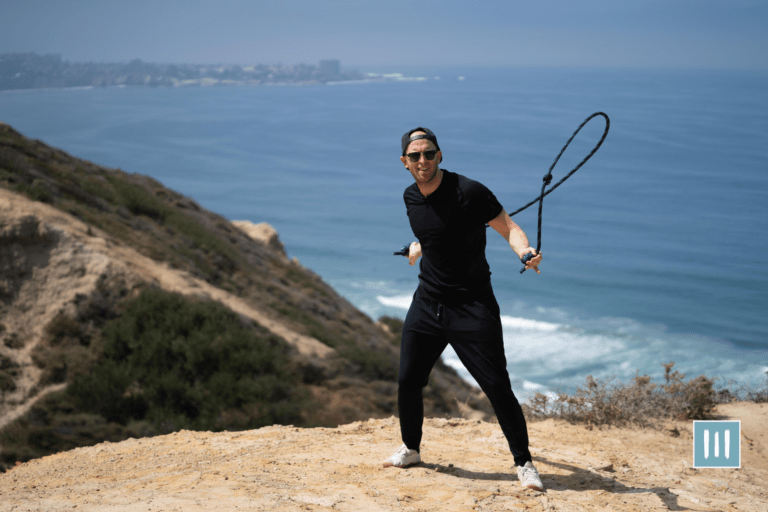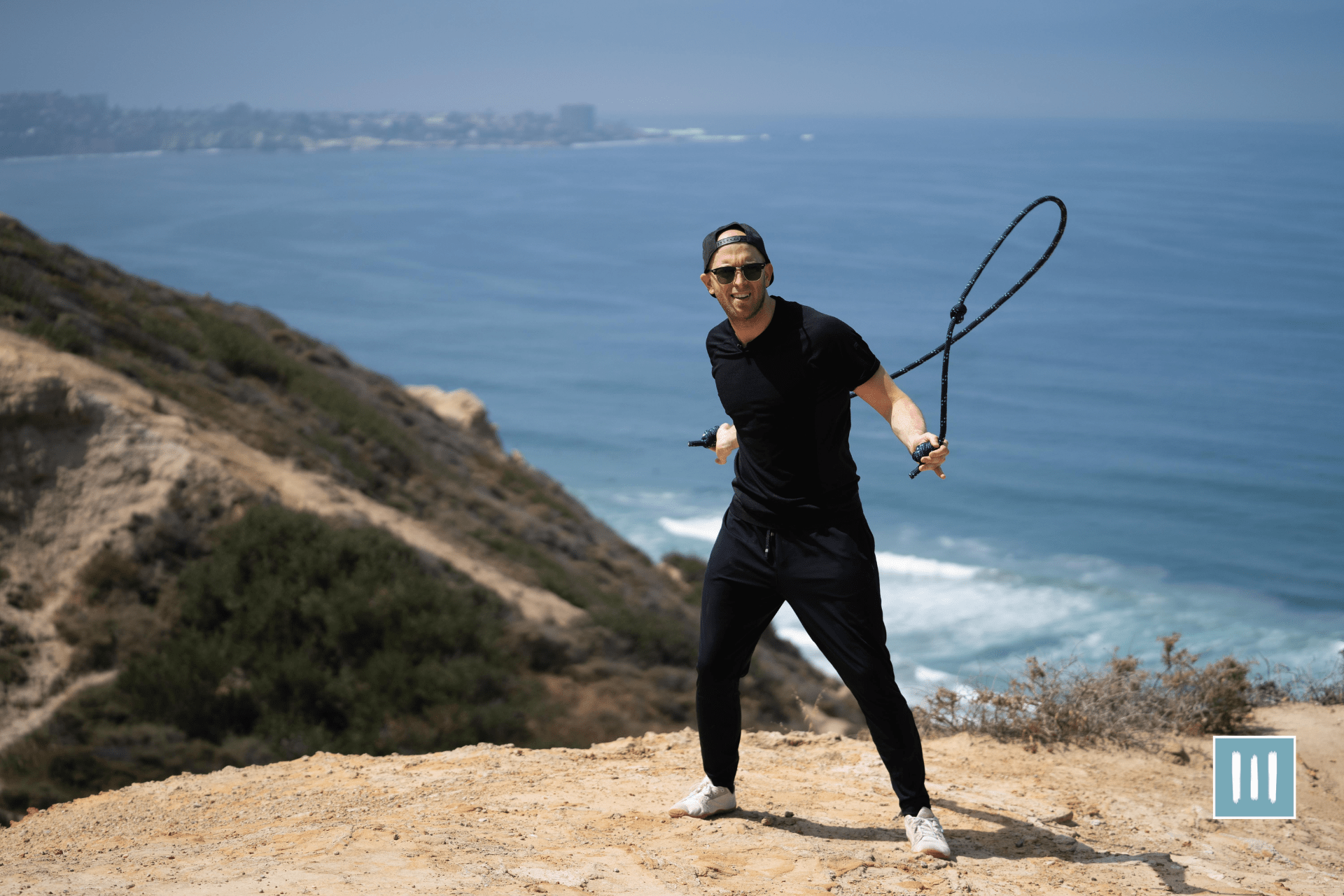Rope flow is a dynamic, versatile exercise routine that transcends traditional fitness boundaries. Its simplicity belies its effectiveness, offering a comprehensive workout that engages multiple muscle groups while boosting cardiovascular endurance and coordination. However, maximizing the benefits of rope flow isn’t merely about swinging ropes—it’s about mastering technique, consistency, and strategic planning.
In this blog, we’ll explore the essential elements necessary to unlock the full potential of moment flow rope. Whether you’re a novice looking to delve into this invigorating exercise form or an experienced practitioner aiming to refine your skills, understanding the fundamental principles is crucial for reaping its benefits.
Understanding the Basics of Rope Flow
Rope flow, also known as battle rope training, is a dynamic exercise that involves swinging heavy ropes in various patterns to engage multiple muscle groups simultaneously. The primary objective is to create waves or undulations along the length of the rope, requiring coordination, strength, and endurance.
Basic Techniques: Mastering the fundamental techniques is essential for effective rope flow workouts. These include waves, slams, circles, and snakes. Waves involve creating a consistent up-and-down motion in the rope, while slams require forceful downward movements to slam the ropes onto the ground. Circles and snakes involve creating circular or undulating patterns with the rope, challenging stability and coordination.
Body Engagement: One of the key aspects of rope flow is the engagement of various muscle groups. It’s not just an arm workout; it involves the core, shoulders, back, and legs. The continuous movement of the ropes challenges stability and core strength, making it an excellent full-body workout.
Different Types of Ropes and Their Impact on Workouts
Exercise strengthens your heart and improves your circulation. The increased blood flow raises the oxygen levels in your body. Here are some popular types of ropes.
Rope Varieties: There’s no one-size-fits-all approach to battle ropes. Different ropes offer distinct benefits and challenges. Thicker and heavier ropes provide more resistance, demanding greater strength to maneuver, while thinner ropes may allow for faster movements and more intricate patterns.
Length and Material: The length of the rope affects the range of motion and intensity of exercises. Longer ropes can create larger waves but require more space, whereas shorter ropes may limit movement but offer more control. Additionally, the material of the rope, often nylon or polyester, impacts its durability and grip.
Impact on Workouts: Heavier and longer ropes typically provide more resistance, making workouts more intense and challenging. They emphasize strength and power development. Conversely, lighter or shorter ropes may focus more on speed, agility, and refining technique. Understanding these nuances can help tailor workouts to individual fitness goals and preferences.
Proper Technique and Form
By using proper technique and form, you can enhance the effectiveness of your rope flow workouts and reap greater rewards. When it comes to rope flow, technique plays a crucial role in maximizing the benefits of this exercise. Proper technique ensures that you engage the right muscles, maintain good posture, and minimize the risk of injury. To help you understand the critical aspects of proper technique and form, here is a table outlining the main points to focus on:
| Technique | Description |
|---|---|
| Grip | Hold the ropes with a relaxed yet firm grip, ensuring that your hands are positioned correctly to allow fluid movement. |
| Posture | Maintain an upright posture throughout the exercise, with your core engaged and shoulders relaxed. This helps to activate the correct muscles and prevent strain on your back. |
| Wrist Action | Use your wrists to create a fluid motion, allowing the ropes to move smoothly and efficiently. Avoid excessive tension in your arms and shoulders. |
| Breathing | Remember to breathe steadily and rhythmically throughout the exercise. This helps to oxygenate your muscles and maintain focus. |
Incorporating Variety in Your Workouts
Regarding maintaining a consistent exercise routine, variety is not just the spice of life – it’s the secret sauce for continued progress and enjoyment. Whether you’re a seasoned fitness enthusiast or just starting your fitness journey, introducing diversity into your workouts is key to preventing plateaus, staying motivated, and achieving well-rounded fitness goals.
Why Variety Matters:
Muscle Confusion and Adaptation: The human body is remarkably adaptable. Over time, it becomes accustomed to repetitive movements or exercises, leading to diminished returns regarding strength gains or fat loss. Introducing variety challenges the muscles in new ways, preventing adaptation and encouraging continuous improvement.
Mental Stimulation: Performing the same routine daily can become monotonous, potentially leading to decreased motivation and interest in exercise. Incorporating variety keeps workouts fresh and exciting, stimulating the mind and body.
Injury Prevention: Repetitive stress on particular muscle groups or joints can increase the risk of overuse injuries. Diversifying workouts allows these areas to rest while engaging different muscle groups, reducing the likelihood of strain or injury.
Tips for Adding Variety:
1. Explore Different Exercise Modalities: Incorporate a mix of cardiovascular exercises, strength training, flexibility work, and balance exercises into your routine. Try activities like cycling, swimming, yoga, Pilates, or dance classes to diversify your regimen.
2. Vary Intensity and Duration: Mix up the intensity levels of your workouts. Alternate between high-intensity interval training (HIIT) sessions, moderate cardio, and steady-state workouts. Additionally, varying workout durations can provide different benefits, from quick bursts of energy to longer, endurance-focused sessions.
3. Experiment with Equipment: Utilize a range of fitness equipment, such as resistance bands, kettlebells, medicine balls, or battle ropes. Each piece of equipment offers unique challenges and engages muscles differently.
4. Try New Moves and Techniques: Regularly introduce new exercises or techniques into your workouts. This could involve changing the grip, stance, or tempo of familiar exercises or learning new movements to challenge your body in novel ways.
5. Engage in Outdoor Activities: Take advantage of nature by incorporating outdoor activities like hiking, trail running, rock climbing, or even outdoor yoga. The change in scenery and terrain adds a refreshing dimension to your workouts.
Progression and Challenge
In fitness, progression, and challenge are pillars upon which individuals build strength, endurance, and overall physical prowess. Regardless of your fitness level, pursuing improvement is an ongoing journey, and embracing challenges is essential for continual growth. Let’s explore how progression and challenges are fundamental to optimizing your fitness routine.
Understanding Progression:
Setting Clear Goals: Defining specific, measurable, and realistic fitness goals. Whether it’s increasing the number of repetitions, lifting heavier weights, or improving cardiovascular endurance, setting clear objectives serves as a roadmap for progress.
Gradual Increases in Intensity: Progression involves gradually intensifying your workouts over time. This could mean adding more weight, increasing workout duration, or enhancing the difficulty level of exercises. Incremental changes allow your body to adapt and grow stronger while minimizing the risk of injury.
Tracking and Measuring Progress: Monitoring your progress is crucial for staying on track and motivated. Keep a workout journal, use fitness apps, or take regular assessments to track improvements in strength, endurance, flexibility, or any other fitness metric aligned with your goals.
Embracing Challenges:
Stepping Out of Your Comfort Zone: Challenges present an opportunity to push boundaries and discover your potential. Embrace exercises or routines that feel slightly uncomfortable but are achievable with effort. Overcoming these challenges fosters growth both physically and mentally.
Variation and Novelty: Introducing new challenges keeps workouts fresh and prevents stagnation. Experiment with different exercise modalities, intensities, or techniques to constantly challenge your body in new ways. This could involve trying advanced movements, increasing resistance, or exploring different workout styles.
Consistency Amidst Challenges: While challenges are essential for growth, consistency is equally important. Don’t let the fear of a challenge deter you from staying committed to your fitness routine. Consistency in training forms the foundation upon which you build progress and overcome obstacles.
Benefits of Progression and Challenges:
- Continuous Improvement: Facilitates ongoing growth and development.
- Increased Motivation: Overcoming challenges boosts confidence and drive.
- Adaptability: Helps the body adapt to new stresses and demands.
- Prevents Plateaus: Keeps workouts effective and prevents stagnation.
Strategies for Implementing Progression and Challenges:
- Gradual Progression: Increase intensity or difficulty gradually to avoid overwhelming the body.
- Periodization: Plan phases of varying intensity to prevent burnout and optimize performance.
- Seek Guidance: Consider working with a fitness professional to create structured programs aligned with your goals and abilities.
In a Nutshell
Technique, consistency, and adaptability are key to maximizing rope flow benefits. Understanding the fundamentals, experimenting with variations, and continually challenging yourself are essential components for reaping the rewards of this dynamic exercise form. By honing your skills, embracing diverse routines, and tracking your progress, you’ll unlock the full potential of rope flow, experiencing improved cardiovascular health, enhanced strength, and heightened coordination. Make rope flow an integral part of your fitness journey, and let its rhythmic motion propel you toward a fitter, stronger, and more resilient version of yourself. Elevate your workouts, embrace the flow, and thrive!
Frequently Asked Questions
How long does it take to see results from rope flow exercises?
Seeing results from rope flow exercises depends on your commitment and consistency. With regular practice, you can start noticing improvements in your strength, endurance, and overall fitness within a few weeks. Keep pushing yourself and embrace the journey to mastery!
Can rope flow exercises help with weight loss?
Yes, rope flow exercises can help with weight loss. By incorporating a variety of movements and intensities, they burn calories and improve cardiovascular fitness. Picture each jump as a step towards your weight loss goals.
Are there any specific warm-up exercises recommended before starting a rope flow workout?
Before starting a rope flow workout, it’s crucial to do warm-up exercises to prepare your body. Engage your muscles with dynamic stretches, such as arm circles and leg swings, to prevent injury and maximize the benefits of your workout.
Can people of all fitness levels do rope flow exercises?
Yes, people of all fitness levels can do rope flow exercises. Like a river flowing through different landscapes, rope flow adapts to your abilities, allowing you to progress toward mastery gradually.
Are there any modifications or alternatives for individuals with joint or mobility issues?
If you have joint or mobility issues, there are modifications and alternatives you can try for rope flow exercises. Consider using a lighter rope, reducing intensity, or focusing on upper body movements.

















